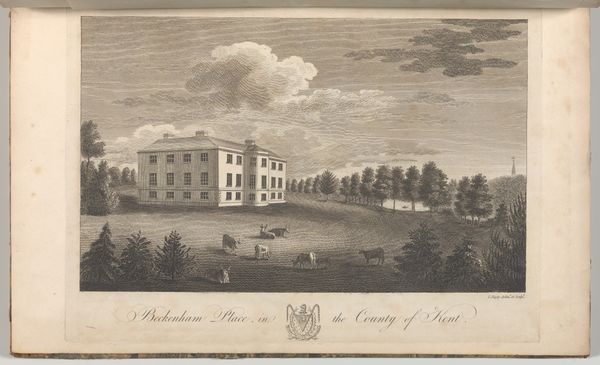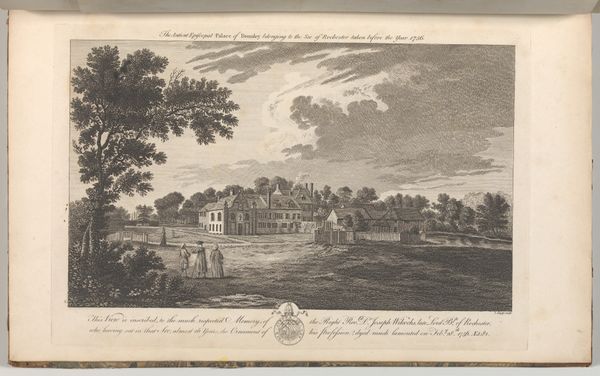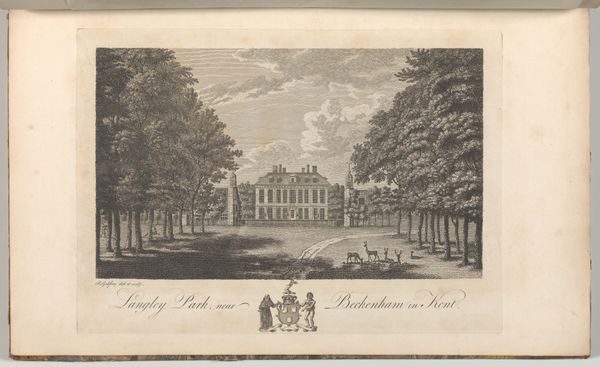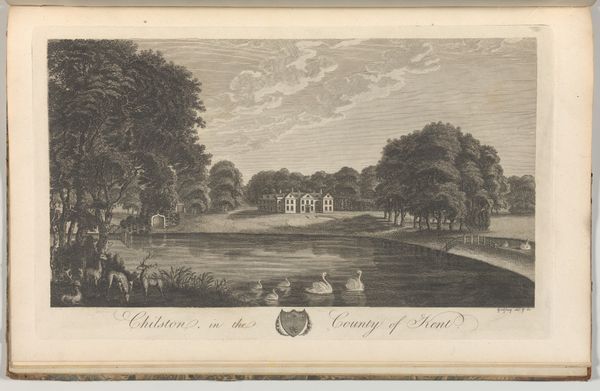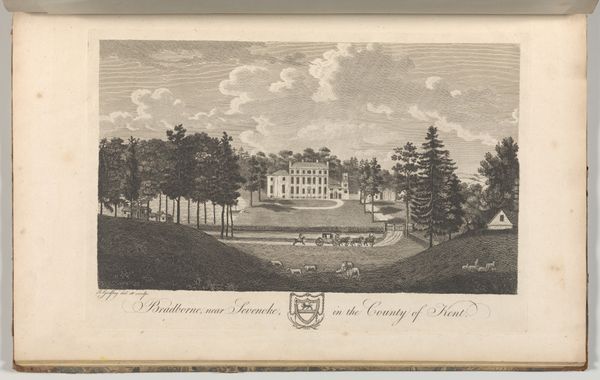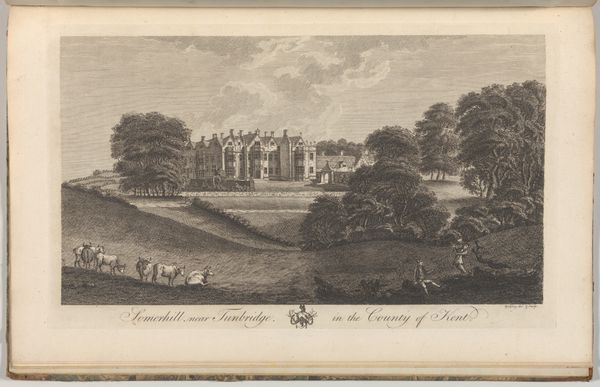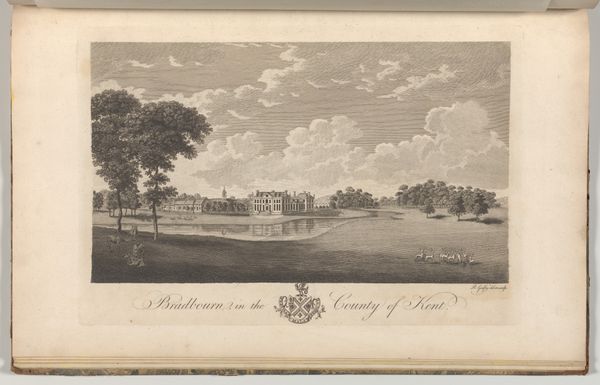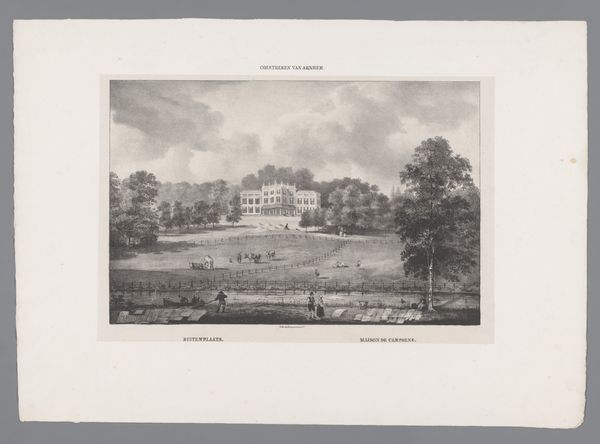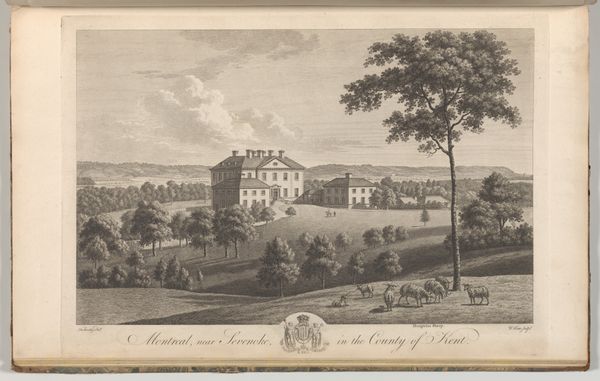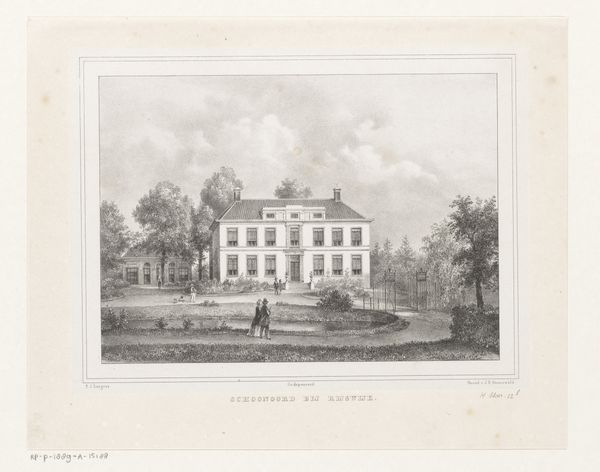
Belvidere House, near Erith, in the County of Kent, from Edward Hasted's, The History and Topographical Survey of the County of Kent, vols. 1-3 1777 - 1790
0:00
0:00
drawing, print, paper, engraving, architecture
#
drawing
#
neoclacissism
# print
#
book
#
landscape
#
paper
#
cityscape
#
history-painting
#
engraving
#
architecture
#
building
Dimensions: Book: 17 5/16 × 11 × 13/16 in. (44 × 28 × 2 cm) Sheet: 16 15/16 × 10 5/8 in. (43 × 27 cm) Plate: 10 1/16 × 14 in. (25.5 × 35.5 cm)
Copyright: Public Domain
Curator: This is an engraving entitled "Belvidere House, near Erith, in the County of Kent," created between 1777 and 1790 by Richard Bernard Godfrey. It's a detailed landscape depicting a grand estate. Editor: It strikes me as incredibly ordered, almost serenely so. The lines are so precise, creating a very controlled view of nature. You can really sense the class stratification implicit in these estates; ownership radiating power. Curator: Indeed, these estate portraits were often commissioned as symbols of status and the Enlightenment's fascination with control and reason over nature. Note the almost mathematical precision in the architectural details and the manicured lawn, emblematic of man's ordering hand. Editor: And what materials were likely employed? It looks like paper was essential for this engraving but there are unseen resources, copperplates for instance, in which we must assume skillful artisans labored, perhaps collaboratively. We see only a document here, but behind it exist processes of production Curator: Absolutely. The choice of engraving is also significant; the medium lent itself to reproducibility, further spreading and solidifying the image of this ordered, powerful existence throughout society. Think of the visual echoes of Roman villas that were then so celebrated by wealthy aristocrats in the Neoclassical era. Editor: Yes, it brings up an interesting point: these country houses also signified a move away from the chaos and close quarters of London. What mythologies were these estates built upon regarding notions of rural versus city living, and who would have benefited or suffered from those notions? Curator: Exactly. The history paintings, idealized architecture, landscapes and symbols create this world. The image works on so many levels, reinforcing cultural values of the time. Editor: Thinking about the labor of land management too, which certainly sustained this vision. The image conceals all evidence of that labor. Curator: Ultimately, it's an artifact encapsulating layers of cultural ideals of control, status, and manufactured history all captured with amazing precision. Editor: It gives a vivid lens through which we can better appreciate class structure of the period, showing power not just materially, but symbolically ingrained.
Comments
No comments
Be the first to comment and join the conversation on the ultimate creative platform.
